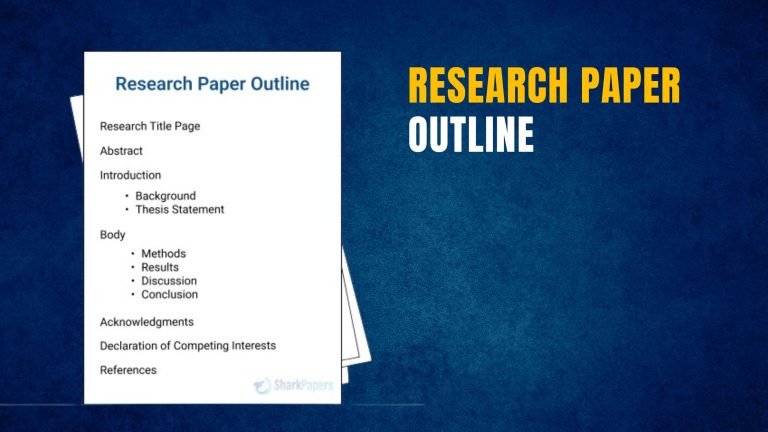Research Objective – Definition, Types, Examples and Best Practices

A research objective is a clear and specific statement that outlines what a study aims to achieve. It defines the focus, scope, and purpose of the research, ensuring a structured approach to data collection and analysis. Research objectives help researchers stay on track, provide direction for the study, and guide the interpretation of results. These objectives can vary based on the type of research—whether exploratory, descriptive, or analytical. Different types and best practices for formulating research objectives is essential for conducting effective and meaningful studies.
What is a Research Objective?
A research objective is defined as a clear and concise statement of the specific goals and aims of a research study. It outlines what the researcher intends to accomplish and what they hope to learn or discover through their research. Research objectives are crucial for guiding the research process and ensuring that the study stays focused and on track.
Key characteristics of research objectives include:
- Clarity: Research objectives should be clearly defined and easy to understand. One should ensure there is no space for ambiguity or misinterpretation.
- Specificity: Objectives should be specific and narrowly focused on the aspects of the research topic that the study intends to investigate. They should answer the question of “what” or “which” rather than “how” or “why.”
- Measurability: Research objectives should be formulated in a way that allows for measurement and evaluation. This means that there should be a way to determine whether the objectives have been achieved or not.
- Relevance: Objectives should be relevant to the research topic and align with the overall research question or hypothesis. They should address important aspects of the subject matter.
- Realistic: Objectives should be attainable within the constraints of the study, including time, resources, and feasibility.
- Time-bound: Research objectives may have associated timelines or deadlines to indicate when the research aims should be accomplished.
Research objectives help researchers stay focused on the purpose of their study and guide the development of research methods, data collection, and analysis. They also serve as a basis for evaluating the success of the research once it’s completed. In the context of a research project, research objectives typically follow the formulation of a research question or hypothesis and serve as a roadmap for conducting the study.
Types of Research Objectives
Research objectives can be categorized into different types based on their focus and purpose within a research study. Here are some common types of research objectives:
1. Descriptive Objectives
These objectives aim to provide a detailed and accurate description of a phenomenon, event, or subject. They focus on answering questions about what, who, where, and when.
Example: “To delineate the demographic attributes of the study’s participants.”
2. Exploratory Objectives
Exploratory objectives are used when researchers seek to gain a better understanding of a topic, especially when there is limited existing knowledge. They often involve preliminary investigations.
Example: “To investigate the possible determinants impacting consumer inclinations towards sustainable products.”
3. Explanatory Objectives
Explanatory objectives are designed to identify the relationships between variables and explain the causes or reasons behind certain phenomena.
Example: “To examine the causal relationship between smoking habits and the development of lung cancer.”
4. Comparative Objectives
These objectives involve comparing two or more variables, groups, or situations to identify similarities, differences, patterns, or trends.
Example: “To compare the performance of two different marketing strategies in terms of their impact on sales.”
5. Predictive Objectives
Predictive objectives aim to forecast or predict future outcomes or trends based on existing data or patterns.
Example: “To forecast customer attrition rates within an online subscription service by utilizing historical usage patterns and satisfaction data.”
6. Normative Objectives
Normative objectives involve establishing standards, guidelines, or recommendations for a specific area of study.
Example: “To develop industry-specific ethical guidelines for the responsible use of artificial intelligence.”
7. Qualitative Objectives
Qualitative objectives are used in qualitative research to explore and understand experiences, perceptions, and behaviors in-depth.
Example: “To reveal the latent motivations and emotions of participants within a qualitative interview investigation.”
8. Quantitative Objectives
Quantitative objectives involve the collection and analysis of numerical data to measure and quantify specific phenomena.
Example: “To ascertain the relationship between income levels and the availability of educational resources among a selected group of households.”
9. Longitudinal Objectives
Longitudinal objectives involve studying the same subjects or entities over an extended period to track changes or developments.
Example: “To assess the cognitive development of children from kindergarten through high school graduation.”
10. Cross-Sectional Objectives
Cross-sectional objectives involve the study of a sample at a single point in time to gather data about a population’s characteristics or attitudes.
Example: “To assess the present employment situation and job satisfaction levels among healthcare sector employees.”
The choice of research objective type depends on the nature of the research, the research questions or hypotheses, and the overall goals of the study. Researchers often use a combination of these types to address different aspects of their research inquiries.
Learn more: What is Research Design?
Top 6 Examples of Research Objectives
Research objectives can vary widely depending on the field of study and the specific research topic. However, I can provide you with some examples of research objectives in different domains to illustrate their diversity:
1. Healthcare Research
- To investigate the relationship between regular physical activity and the incidence of cardiovascular diseases in adults aged 40-60.
- To assess the effectiveness of a new drug in reducing symptoms of a specific medical condition over a six-month period.
- To identify the factors influencing healthcare-seeking behavior among a specific demographic group.
2. Educational Research
- To examine the impact of technology integration in the classroom on students’ academic performance in mathematics.
- To determine the effectiveness of a new teaching method for improving reading comprehension in elementary school children.
- To explore the factors that contribute to student dropout rates in a particular educational institution.
3. Environmental Science Research
- To analyze the effects of climate change on the migration patterns of a specific bird species in a particular region.
- To investigate the long-term impact of deforestation on local biodiversity in a tropical rainforest.
- To assess the effectiveness of a conservation program in preserving a critically endangered species.
4. Business and Marketing Research
- To evaluate consumer preferences for eco-friendly packaging materials in the cosmetics industry.
- To analyze the market potential for a new product in a specific geographical area.
- To identify the key factors influencing customer loyalty in the fast-food restaurant industry.
5. Social Science Research
- To examine the relationship between socioeconomic status and access to quality healthcare in urban areas.
- To investigate the influence of adolescents’ use of social media on their mental well-being.
- To investigate the factors contributing to workplace diversity and inclusion in a multinational corporation.
6. Psychological Research
- To investigate the effects of mindfulness meditation on reducing symptoms of anxiety in adults.
- To explore the relationship between early childhood experiences and attachment styles in adulthood.
- To analyze the factors influencing decision-making in individuals with specific personality traits.
These examples cover a range of research objectives across different disciplines. Keep in mind that research objectives should be tailored to the specific research question or hypothesis and should be formulated to guide the research process effectively.
Research Objectives Best Practices
Creating effective research objectives is essential for conducting a successful research study. Here are some best practices to keep in mind when formulating research objectives:
Be Specific and Clear:
- Research objectives should be precise and unambiguous. They should clearly state what the study aims to achieve, leaving no room for misinterpretation.
Align with Research Questions or Hypotheses:
- Ensure that your research objectives directly align with the broader research questions or hypotheses that guide your study. They should help you address those overarching inquiries.
Use Action Verbs:
- Start your research objectives with action verbs that describe what you intend to do. Common action verbs include “to investigate,” “to analyze,” “to examine,” “to compare,” “to determine,” etc.
Focus on Measurable Outcomes:
- Make sure your research objectives are formulated in a way that allows for measurement and evaluation. There should be a way to determine whether the objectives have been achieved or not.
Be Realistic and Feasible:
- Set research objectives that are attainable within the constraints of your study, including available time, budget, and resources. Unrealistic objectives can lead to frustration and failure.
Consider the Scope of the Study:
- Keep the scope of your research in mind when defining objectives. Ensure that your objectives are neither too broad nor too narrow. They should be manageable within the context of your study.
Prioritize Objectives:
- If you have multiple research objectives, consider prioritizing them. Identify which objectives are most crucial to the success of your study and allocate resources accordingly.
Ensure Relevance:
- Objectives should be directly relevant to the research topic and the overall purpose of the study. Avoid including objectives that do not contribute to answering your research questions or testing your hypotheses.
Consider the Target Audience:
- Think about who will be reading your research objectives. They should be understandable to both experts in your field and non-expert stakeholders.
Review and Refine:
- It’s a good practice to review and refine your research objectives after initial formulation. Seek feedback from peers, advisors, or mentors to ensure they are well-constructed and aligned with your study’s goals.
Use SMART Criteria:
Apply the SMART criteria to your research objectives:
- Specific: Clarify the specific goal or objective you would like to achieve.
- Measurable: Include criteria for measuring success.
- Achievable: Set realistic and attainable objectives.
- Relevant: Ensure they are relevant to your research.
- Time-bound: Include a timeframe for achieving each objective.
Be Open to Adaptation:
- Research objectives may evolve as your study progresses and new information emerges. Be open to adapting them if necessary to better align with your research findings and goals.
Document Your Objectives:
- Keep a clear record of your research objectives in your research proposal, plan, or protocol. This documentation helps maintain focus throughout the study.
By following these best practices, you can create research objectives that guide your study effectively and contribute to its success in achieving its intended outcomes.
Tips for Writing Strong Research Objectives
- Focus on the Research Problem: Ensure each objective directly addresses the central research question.
- Keep Objectives Measurable: Use specific, quantifiable terms to track progress and outcomes.
- Limit the Number of Objectives: Avoid overloading your study with too many goals. Aim for 3–5 specific objectives.
- Write in the Present Tense: Use active voice and present tense for clarity.
- Consult Your Supervisor or Team: Seek feedback to ensure your objectives are relevant and achievable.
Common Mistakes to Avoid
- Being Too Broad: Objectives that are overly general lack focus and clarity.
- Weak Objective: “To improve healthcare.”
- Revised Objective: “To evaluate the impact of telemedicine on patient satisfaction in rural areas.”
- Using Vague Terms: Avoid words that are open to interpretation.
- Weak Objective: “To understand employee motivation.”
- Revised Objective: “To analyze the factors influencing employee motivation in tech startups.”
- Ignoring Feasibility: Unrealistic objectives can undermine the study’s credibility.
- Example: A small-scale study attempting to analyze global trends without adequate resources.
- Overloading with Objectives: Too many objectives can dilute the focus and complicate the study.
Research objectives are essential for guiding a study and ensuring its success. They define the purpose, scope, and direction of the research, making it easier to select methodologies, analyze data, and draw conclusions.
FAQs
1. What is the goal of a research study?
The goal of a research study is to define the main aim, guiding the investigation toward specific findings. It provides a structured direction to explore and analyze a subject in depth.
2. How do you define the purpose of research?
The purpose of research is to establish what the study intends to achieve. It outlines the investigation’s focus, ensuring clarity in data collection and analysis.
3. Why is defining study objectives important?
Defining study objectives is crucial because they set a clear pathway for data gathering, analysis, and conclusions. Without well-defined goals, the research can become unfocused and ineffective.
4. What are the key features of a research goal?
A research goal should be specific, measurable, achievable, relevant, and time-bound (SMART). These characteristics help maintain precision and efficiency in the study.
5. How do you craft a clear research focus?
To craft a clear research focus, identify the main problem, set achievable targets, and ensure alignment with the broader study area. Precision and relevance are key.
6. What are the different types of research objectives?
Research objectives can be exploratory (understanding new concepts), descriptive (detailing facts), analytical (examining relationships), or applied (solving real-world issues).
7. How do research goals influence methodology?
Research goals shape the methodology by determining data collection techniques, analysis methods, and study design, ensuring alignment with the intended outcomes.
8. What is the difference between general and specific study objectives?
General objectives provide an overall direction, while specific objectives break down the study into measurable steps to achieve the main goal systematically.
9. How do you align study objectives with hypotheses?
Study objectives align with hypotheses by ensuring that the research questions and predictions directly contribute to answering the primary goal of the investigation.
10. What challenges arise when setting research goals?
Challenges include vague wording, overly broad scope, lack of feasibility, and misalignment with available resources, which can impact study accuracy and success.






